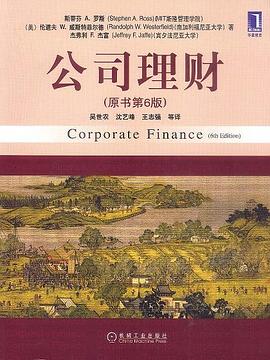Brief Contents
1 INTRODUCTlON
2 FUTURES MARKETS AND THE USE OF FUTURES
FOR HEDGlNG
3 FORWARD AND FUTURES PRlCES
4 INTEREST RATE FUTURES
5 SWAPS
6 OPTlONS MARKETS
7 PROPERTlES OF STOCK OPTlON PRlCES
8 TRADlNG STRATEGlES INVOLVlNG OPTlONS
9 INTRODUCTlON TO BlNOMlAL TREES
10 MODEL OF THE BEHAVlOR OF STOCK PRlCES
11 THE BLACK-SCHOLES ANALYSlS
12 OPTlONS ON STOCK INDlCES, CURRENClES
AND FUTURES CONTRACTS
13 GENERAL APPROACH TO PRlClNG DERlVATlVES
14 THE MANAGEMENT OF MARKET RlSK
15 NUMERlCAL PROCEDURES
16 INTEREST RATE DERlVATlVES AND THE USE
OF BLACK'S MODEL
17 INTEREST RATE DERlVATlVES AND MODELS
OF THE YlELD CURVE
18 EXOTlC OPTlONS
19 ALTERNATlVES TO BLACK-SCHOLES
FOR OPTlON PRlClNG
20 CREDlT RlSK AND REGULATORY CAPYTA
21 REVlEW OF KEY CONCEPTS
Contents
PREFACE
1 INTRODUCTlON
1.1 Forward Contracts
1.2 Futures Contracts
1.3 Options
1.4 Other Derivatives
1.5 Types of Traders
1.6 Summary
Questions and Problems
2 FUTURES MARKETS AND THE USE OF FUTURES
FOR HEDGlNG
2.1 Trading Futures Contracts
2.2 Specification of the Futures Contract
2.3 Operation of Margins
2.4 Newspaper Quotes
2.5 Convergence of Futures Price to Spot Price
2.6 Settlement
2.7 Regulation
2.8 Hedging Using Futures
2.9 Optimal Hedge Ratio
2.10 Rolling the Hedge Forward
2. 11 Accounting and Tax
2.12 Summary
Suggestions for Further Reading
Questions and Problems
3 FORWARD AND FUTURES PRlCES
3.1 Some Preliminaries
3.2 Forward Contracts on a Security That Provides
No Income
3.3 Forward Contracts on a Security That Provides
a Known Cash Income
3.4 Forward Contracts on a Security That Provides
a Known Dividend Yield
3.5 General Result
3.6 Forward Prices versus Futures Prices
3.7 Stock Index Futures
3.8 Forward and Futures Contracts on Currencies
3.9 Futures on Commodities
3.10 The Cost of Carry
3.11 Delivery Choices
3.12 Futures Prices and the Expected Future Spot Price
3.13 Summary
Suggestions for Further Reading
Questions and Problems
Appendix 3A Proof That Forward and Futures Prices Are
Equal When Interest Rates Are Constant
4 INTEREST RATE FUTURES
4.I Some Preliminaries
4.2 Forward Rate Agreements
4.3 Treasury Bond and Treasury Note Futures
4.4 Treasury Bill Futures
4.5 Eurodollar Futures
4.6 Duration
4.7 Duration-Based Hedging Strategies
4.8 Limitations of Duration
4.9 Summary
Suggestions for Further Reading
Questions and Problems
5 SWAPS
5.1 Mechanics of Interest Rate Swaps
5.2 The Comparative Advantage Argument
5.3 Valuation of Interest Rate Swaps
5.4 Currency Swaps
5.5 Valuation of Currency Swaps
5.6 Other Swaps
5.7 Credit Risk
5.8 Summary
Suggestions for Further Reading
Questions and Problems
6 OPTlONS MARKETS
6. l Exchange-Traded Options
6.2 Over-the-Counter Options
6.3 Specification of Stock Options
6.4 Newspaper Quotes
6.5 Trading
6.6 Commissions
6.7 Margins
6.8 The Options Clearing Corporation
6.9 Regulation
6.10 Taxation
6.11 Warrants and Convertibles
6.12 Summary
Suggestions for Further Reading
Questions and Problems
7 PROPERTlES OF STOCK OPTlON PRlCES
7.1 Factors Affecting Option Prices
7.2 Assumptions and Notation
7.3 Upper and Lower Bounds for Option Prices
7.4 Early Exercise: Calls on a Non-Dividend-Paying Stock
7.5 Early Exercise: Puts on a Non-Dividend-Paying Stock
7.6 Put-Call Parity
7.7 Effect of Dividends
7.8 Empirical Research
7.9 Summary
Suggestions for Further Reading
Questions and Problems
8 TRADlNG STRATEGlES INVOLVlNG OPTlONS
8.1 Strategies Involving a Single Option and a Stock
8.2 Spreads
8.3 Combinations
8.4 Other Payoffs
8.5 Summary
Suggestions for Further Reading
Questions and Problems
9 INTRODUCTlON TO BlNOMlAL TREES
9.1 One-Step Binomial Model
9.2 Risk-Neutral Valuation
9.3 Two-Step Binomial Trees
9.4 Put Example
9.5 American Options
9.6 Delta
9.7 Using Binomial Trees in Practice
9.8 Summary
Suggestions for Further Reading
Quesdons and Problems
10 MODEL OF THE BEHAVlOR OF STOCK PRlCES
10.1 The Markov Property
10.2 Wiener Processes
10.3 The Process for Stock Prices
10.4 Review of the Model
10.5 The Parameters
10.6 Ito's Lemma
10.7 Summary
Suggestions for Further Reading
Questions and Problems
Appendix 10A Derivation of Ito's Lemma
11 THE BLACK-SCHOLES ANALYSlS
11.1 Lognonnal Property of Stock Prices
11.2 The Distribudon of the Rate of Return
11.3 Estimating Volatility from Historical Data
11.4 Concepts Underiying the Black-Scholes Differential
Equation
11.5 Derivation of the Black-Scholes Differential Equation
11.6 Risk-Neutral Valuation
11.7 Black-Scholes Pricing Formulas
11.8 Cumulative Normal Distribution Function
11.9 Warrants Issued by a Company on Its Own Stock
11.10 Implied Voladlities
11.11 The Causes of Volatility
11.12 Dividends
11.13 Summary
Suggestions for Further Reading
Questions and Problems
Appendix 11A Exact Procedure for Calculating Values
of American Calls on Dividend-Paying
Stocks
Appendix llB Calculation ofCumulative Probability
in Bivariate Normal Distribution
12 OPTlONS ON STOCK INDlCES, CURRENClES
AND FUTURES CONTRACTS
12.1 Extending Black-Scholes
12.2 Pricing Fonnulas
12.3 Options on Stock Indices
12.4 Currency Options
12.5 Futures Opdons
12.6 Summary
Suggestions for Further Reading
Questions and Problems
Appendix 12A Derivation of Differential Equation Satisfied
by a Derivative Dependent on a Stock Paying
a Continuous Dividend Yield 284
Appendix 12B Derivation of Differential Equation Satisfied
by a Derivative Dependent on a Futures
Price
13 GENERAL APPROACH TO PRlClNG DERlVATlVES
13.1 Single Underlying Variable
13.2 Interest Rate Risk
13.3 Securities Dependent on Several State Variables
13.4 Is It Necessary to Estimate the Market Price
of Risk?
13.5 Derivatives Dependent on Commodity Prices
13.6 Quantos
13.7 Summary
Suggestions for Further Reading
Questions and Problems
Appendix 13A Generalization of Ito's Lemma
Appendix 13B Derivation of the General Differential Equation
Satisfied by Derivatives
14 THE MANAGEMENT OF MARKET RlSK
14.1 Example
14.2 Naked and Covered Positions
14.3 A Stop-Loss Strategy
14.4 More Sophisticated Hedging Schemes
14.5 Delta Hedging
14.6 Theta
14.7 Gamma
14.8 Relationship among Delta, Theta and Gamma
14.9 Vega
14.10 Rho
14.11 Scenario Analysis
14.12 Portfolio Insurance
14.13 Summary
Suggestions for Further Reading
Questions and Problems
Appendix 14A Taylor Series Expansions
and Hedge Parameters
15 NUMERlCAL PROCEDURES
15.1 Binomial Trees
15.2 Using the Binomial Tree for Options on Indices
Currencies and Futures Contracts
15.3 Binomial Model for a Dividend-Paying Stock
15.4 Extensions of the Basic Tree Approach
15.5 Altemative Procedures for Construcdng Trees
15.6 Monte Carlo Simulation
15.7 Variance Reduction Procedures
15.8 Finite Difference Methods
15.9 Analytic Approximations in Option Pricing
15.10 Summary
Suggestions for Further Reading
Questions and Problems
Appendix 15A Analytic Approximation to American Option
Prices of Macmillan and Barone-Adesi
and Whaley
16 DSTTEREST RATE DERlVATlVES AND THE USE
OF BLACK'S MODEL
16.1 Exchange-Traded interest Rate Options
16.2 Embedded Bond Options
16.3 Mortgage-Backed Securities
16.4 Option-Adjusted Spread
16.5 Black's Model
16.6 European Bond Options
16.7 Interest Rate Caps
16.8 European Swap Options
16.9 Accrual Swaps
16.10 Spread Options
16.11 Convexity Adjustments
16.11 Summary 411
Suggestions for Further Reading
Questions and Problems
Appendix 16A Proof of the Convexity Adjustment Formula
17 INTEREST RATE DERlVATlVES AND MODELS
OF THE YlELD CURVE
17.1 Introduction to Equilibrium Models
17.2 One-Factor Models
17.3 The Rendleman and Bartter Model
17.4 The Vasicek Model
17.5 The Cox, Ingersoll and Ross Model
17.6 Two-Factor Models
17.7 Introduction to No-Arbitrage Models
17.8 Modeling Forward Rates
17.9 Developing Markov Models
17.10 Ho and Lee Model
17.11 Hull and White Model
17.12 Interest Rate Trees
17.13 A General Tree-Building Procedure
17.14 Nonstationary Models
17.15 Forward Rates and Futures Rates
17.16 Summary
Suggestions for Further Reading
Questions and Problems
18 EXOTlC OPTlONS
18.1 Types of Exotic Options
18.2 Basic Numerical Procedures
18.3 Path-Dependent Derivatives
18.4 Lookback Options
18.5 Barrier Options
18.6 Options on Two Correlated Assets
18.7 Hedging issues
18.8 Static Options Replication
18.9 Summary
Suggestions for Further Reading
Questions and Problems
19 ALTERNATlVES TO BLACK-SCHOLES
FOR OPTlON PRlClNG
19.1 Known Changes in the Interest Rate
and Volatility
19.2 Merton's Stochastic interest Rate Model
19.3 Pricing Biases
19.4 Altemative Models
19.5 Overview of Pricing Biases
19.6 Stochastic Volatility
19.7 How Black-Scholes Is Used in Practice
19.8 Implied Trees
19.9 Empirical Research
19.10 Summary
Suggestions for Further Reading
Questions and Problems
Appendix 19A Pricing Formulas for Altemative Models
20 CREDlT RlSK AND REGULATORY CAPlTAL
20.1 Background
20.2 Adjusting the Prices of Options for Credil Risk
20.3 Contracts That Can Be Assets or Liabilities
20.4 Historical Default Experience
20.5 Valuation of Convertible Bonds
20.6 The BlS Capital Requirements
20.7 Reducing Exposure to Credit Risk
20.8 Summary
Suggestions for Further Reading
Questions and Problems
21 REVIEW OF KEY CONCEPTS
21.1 Riskless Hedges
21.2 Traded Securities versus Other Underlying Variables
21.3 Risk-Neutral Valuation
21.4 Those Big Losses
21.5 A Final Word
MAJOR EXCHANGES
GLOSSARY OF NOTATlON
TABLE FOR N(x) WHEN x 0
TABLE FOR N(x) WHEN x 0
AUTHOR INDEX
SUBJECT INDEX
· · · · · · (
收起)

 公司理财 pdf epub mobi txt 电子书 下载
公司理财 pdf epub mobi txt 电子书 下载 非理性繁荣 pdf epub mobi txt 电子书 下载
非理性繁荣 pdf epub mobi txt 电子书 下载 伟大的博弈 pdf epub mobi txt 电子书 下载
伟大的博弈 pdf epub mobi txt 电子书 下载 世界是平的 pdf epub mobi txt 电子书 下载
世界是平的 pdf epub mobi txt 电子书 下载 证券分析 pdf epub mobi txt 电子书 下载
证券分析 pdf epub mobi txt 电子书 下载 对冲基金风云录 pdf epub mobi txt 电子书 下载
对冲基金风云录 pdf epub mobi txt 电子书 下载 民主的细节 pdf epub mobi txt 电子书 下载
民主的细节 pdf epub mobi txt 电子书 下载 激荡三十年(上) pdf epub mobi txt 电子书 下载
激荡三十年(上) pdf epub mobi txt 电子书 下载 阅读和欣赏 pdf epub mobi txt 电子书 下载
阅读和欣赏 pdf epub mobi txt 电子书 下载 新概念英语词汇录音多模式跟读训练 3 pdf epub mobi txt 电子书 下载
新概念英语词汇录音多模式跟读训练 3 pdf epub mobi txt 电子书 下载 创造学理论研究与实践探索-首届全国高等学校创造教育及创造学研讨会文集 pdf epub mobi txt 电子书 下载
创造学理论研究与实践探索-首届全国高等学校创造教育及创造学研讨会文集 pdf epub mobi txt 电子书 下载 长江三峡工程围堰蓄水期 pdf epub mobi txt 电子书 下载
长江三峡工程围堰蓄水期 pdf epub mobi txt 电子书 下载 挑战大学英语四级考试1688高频核心词汇 pdf epub mobi txt 电子书 下载
挑战大学英语四级考试1688高频核心词汇 pdf epub mobi txt 电子书 下载 自动控制理论 pdf epub mobi txt 电子书 下载
自动控制理论 pdf epub mobi txt 电子书 下载 新编书信万事通 pdf epub mobi txt 电子书 下载
新编书信万事通 pdf epub mobi txt 电子书 下载 雅思考试关键词循环速记手抄本 pdf epub mobi txt 电子书 下载
雅思考试关键词循环速记手抄本 pdf epub mobi txt 电子书 下载 李嘉诚(海阔江长)/二十世纪华人名人小传记丛书 pdf epub mobi txt 电子书 下载
李嘉诚(海阔江长)/二十世纪华人名人小传记丛书 pdf epub mobi txt 电子书 下载 专八英语关键词循环速记手抄本 pdf epub mobi txt 电子书 下载
专八英语关键词循环速记手抄本 pdf epub mobi txt 电子书 下载 365天精彩儿歌 pdf epub mobi txt 电子书 下载
365天精彩儿歌 pdf epub mobi txt 电子书 下载 话语和回忆之乡 pdf epub mobi txt 电子书 下载
话语和回忆之乡 pdf epub mobi txt 电子书 下载 洪家渡水电站工程设计创新技术与应用 pdf epub mobi txt 电子书 下载
洪家渡水电站工程设计创新技术与应用 pdf epub mobi txt 电子书 下载 建筑材料学 pdf epub mobi txt 电子书 下载
建筑材料学 pdf epub mobi txt 电子书 下载 国有经济战略性调整中的律师作用 pdf epub mobi txt 电子书 下载
国有经济战略性调整中的律师作用 pdf epub mobi txt 电子书 下载 中考英语关键词循环速记手抄本 pdf epub mobi txt 电子书 下载
中考英语关键词循环速记手抄本 pdf epub mobi txt 电子书 下载 彩色报头与黑板报设计手册 pdf epub mobi txt 电子书 下载
彩色报头与黑板报设计手册 pdf epub mobi txt 电子书 下载 高考英语关键词循环速记手抄本 pdf epub mobi txt 电子书 下载
高考英语关键词循环速记手抄本 pdf epub mobi txt 电子书 下载 英语语法要点解析 pdf epub mobi txt 电子书 下载
英语语法要点解析 pdf epub mobi txt 电子书 下载 心力衰竭 pdf epub mobi txt 电子书 下载
心力衰竭 pdf epub mobi txt 电子书 下载






























